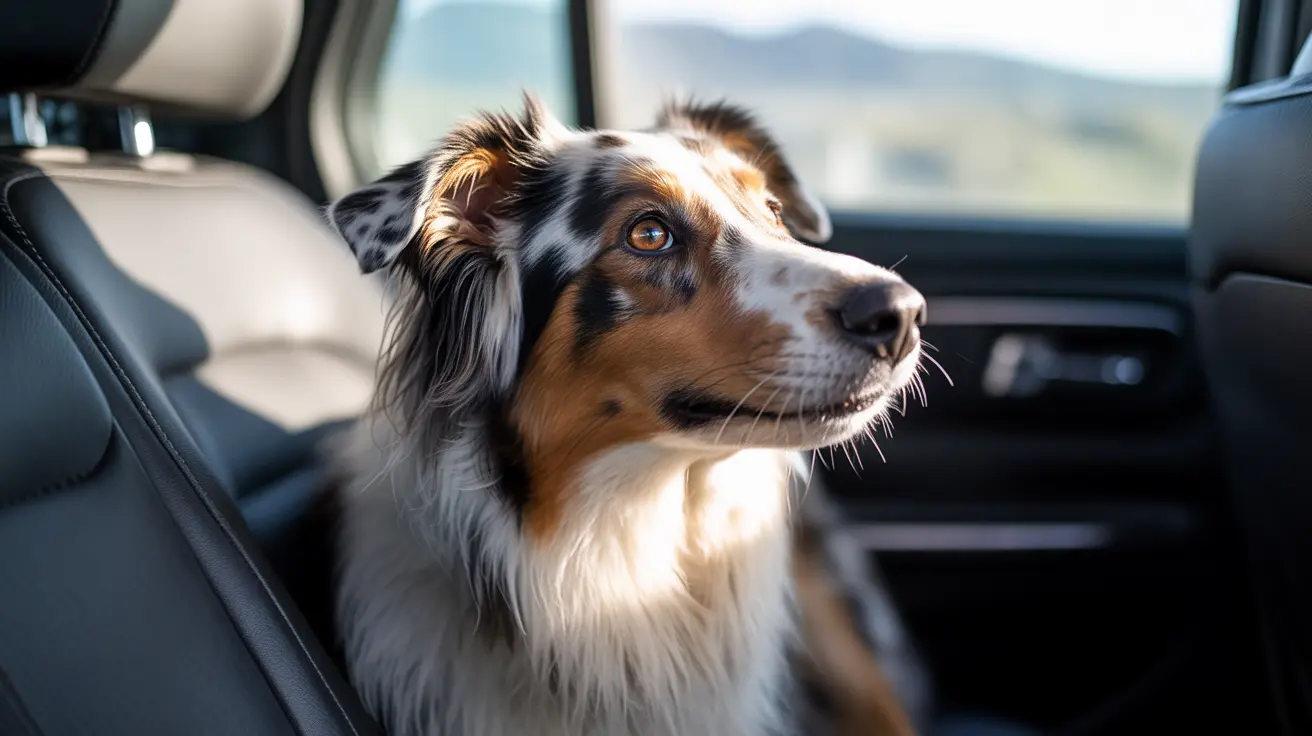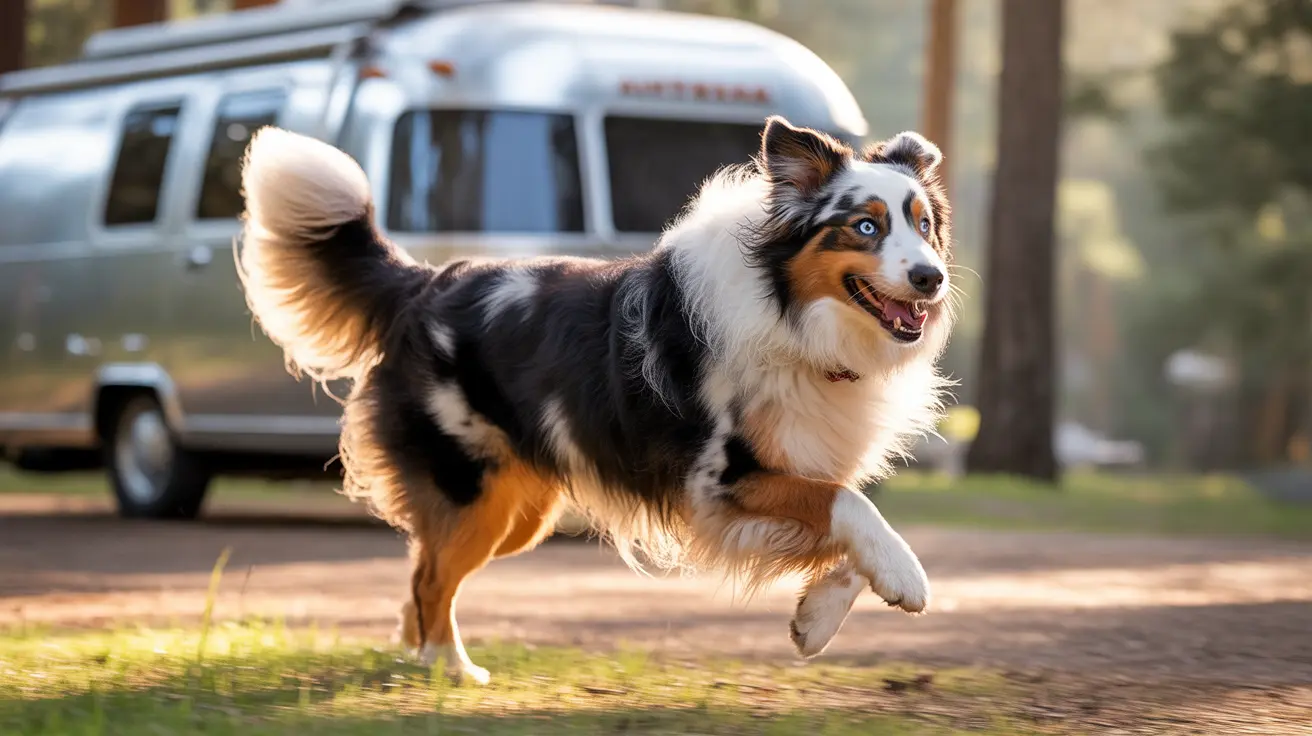Best Car Seat Location for Dogs to Reduce Stress: A Complete Guide to Comfortable Pet Travel
Traveling with your furry companion can be a wonderful bonding experience, but finding the best car seat location for dogs to reduce stress is crucial for ensuring a safe and comfortable journey for everyone. With approximately 25% of dogs finding car rides stressful, understanding where to position your pet can make the difference between a pleasant trip and an anxious ordeal.
The location you choose for your dog during car travel significantly impacts their stress levels, safety, and overall travel experience. Research shows that dogs experience varying degrees of anxiety depending on their seating position, visibility to their owners, and sense of security within the vehicle. This comprehensive guide will help you identify the optimal car seat location for your dog while addressing safety concerns and providing practical solutions for stress-free travel.
The Science Behind Dog Stress and Car Seat Positioning
Understanding why certain car seat locations cause stress in dogs requires examining their natural behaviors and emotional needs during travel. Dogs are pack animals that rely heavily on visual contact with their owners for comfort and security, making seat positioning a critical factor in their stress levels.
The most stressful location for dogs during car rides is the trunk area, where they experience complete isolation from their owners. This separation triggers anxiety because dogs cannot see their human companions, leaving them feeling abandoned and uncertain about their environment. Even when placed in the backseat without visual contact to their owners, dogs show increased stress responses, highlighting the importance of maintaining that crucial owner-pet connection during travel.
Conversely, dogs seated in the backseat with a clear view of their owner experience the least stress during car rides. This positioning allows them to maintain visual contact while providing adequate space and comfort. The front passenger seat, while offering excellent visibility and proximity to the owner, presents significant safety risks due to airbag deployment dangers, making it an unsuitable option despite the dog's potential comfort level.
Optimal Car Seat Locations for Stress Reduction
The Backseat: The Gold Standard
The backseat represents the best car seat location for dogs to reduce stress while maintaining safety standards. This position offers several advantages that directly address canine travel anxiety. Dogs positioned here can easily maintain eye contact with their owners, providing the reassurance they need throughout the journey.
When securing your dog in the backseat, ensure they're properly restrained with crash-tested harnesses that connect to the vehicle's seatbelt system. The Center for Pet Safety (CPS) recommends certified harnesses like the Sleepypod ClickIt Sport and ClickIt Terrain for medium to large dogs, which secure directly to seat belts without extension tethers for maximum safety during collisions.
Cargo Area Considerations
For larger dogs or those requiring crate travel, the cargo area can be an acceptable alternative when properly configured. However, this location requires careful attention to visibility and ventilation. Dogs in cargo areas should have clear sightlines to their owners through rear windows or open cargo barriers. CPS-certified crates like the Gunner Kennel G1 Intermediate provide structural integrity and secure anchoring to vehicle tie-down points.
Vehicle-specific steel dog barriers anchored to the vehicle frame offer safer alternatives to pressure-mounted barriers, which can dislodge during crashes. While these barriers provide separation, they cannot restrain pets during impact like approved harnesses or crates, making proper restraint systems essential even in cargo areas.
Safety Equipment and Proper Installation
Choosing the Right Restraint System
Selecting appropriate safety equipment is crucial for combining stress reduction with protection. Dogs should be safely restrained during car rides to prevent injury and driver distraction. Crash forces dramatically increase a dog's effective weight during accidents, potentially turning an unrestrained pet into a dangerous projectile.
For small dogs, the ZuGoPet Rocketeer Pack attaches to LATCH anchors and has earned CPS certification. CPS-certified carriers like the Sleepypod Mobile Pet Bed, Atom, and Air are ideal for cats and small dogs, featuring secure construction and rigorous crash testing validation.
Installation Best Practices
Proper installation of restraint systems requires following manufacturer instructions precisely. Harnesses should attach to a dog's harness, never to their collar, to prevent injury during sudden stops. Dogs should never travel loose in vehicles, as they can cause accidents and injure themselves or passengers.
For families traveling with both infants and dogs, car seat placement depends on vehicle design, seatbelt anchor availability, and safety considerations. While the center rear seat is often recommended for infant car seats, securing the dog in a side rear seat or properly anchored cargo crate minimizes risks for all passengers.
Practical Stress-Reduction Strategies
Pre-Travel Preparation
Reducing travel stress begins before entering the vehicle. Walk your dog before trips to help them release energy and reduce anxiety. Use ramps or gentle lifting techniques for entry, especially for older dogs or those with mobility concerns. Bringing familiar-smelling blankets creates a comforting environment that smells like home.
Gradual acclimation to the car proves highly effective for anxious dogs. Start with exposure to a stationary vehicle, allowing your dog to explore and become comfortable with the car's interior. Progress to brief engine exposure before attempting actual trips, building positive associations gradually.
During Travel Comfort Measures
Maintain a comfortable environment by controlling noise levels, regulating temperature, and ensuring adequate ventilation. Cars with rear air vents help keep dogs comfortable, particularly important for vehicles with captain's chairs in the second row that offer extra space and comfort.
Reward calm behavior with treats or favorite toys, reinforcing positive associations with car travel. Pack essential items including collapsible water dishes, bottled water, snacks, puppy pads, blankets for short-haired or small dogs, trash bags, toys, and hand sanitizer for convenient travel management.
Vehicle Selection for Dog Travel
Optimal Vehicle Features
Choosing the right vehicle significantly impacts your dog's travel experience. The best cars for traveling with dogs are comfortable, spacious, and allow for secure placement of dog car seats or harnesses. Features like accessible tether anchors, rear air vents for climate control, and adequate cargo or rear-seat space for crates prove invaluable.
Small dogs can travel comfortably in most cars with appropriate seats or crates, while medium and large dogs benefit from SUVs or minivans providing easier access, ample space, and better ventilation systems.
Recommended Vehicle Options
Popular vehicle choices for dog travel include the Jeep Wrangler 4-Door, Subaru Outback, Cadillac XT4 and XT5, Chrysler Pacifica minivan, Honda Pilot, Buick Encore, GMC Acadia, and pickup trucks like the Toyota Tundra and midsize trucks such as the Chevy Colorado. These vehicles provide the ideal combination of space, accessibility, and safety features beneficial for comfortable dog travel.
Managing Severe Travel Anxiety
Advanced Techniques for Anxious Dogs
Dogs with severe travel anxiety require specialized approaches beyond standard positioning strategies. Avoid taking dogs to stressful destinations like veterinary clinics during their first car rides to prevent negative associations with vehicle travel.
For dogs with motion sickness or extreme anxiety, consult with your veterinarian about anti-anxiety medications or natural calming supplements. Combining medication with behavioral training and proper positioning creates comprehensive anxiety management.
Consider using dog car seats that elevate smaller dogs for better window views, as visual stimulation can reduce stress for some pets. Booster seats with built-in tethers, bucket-style seats for medium dogs, and hammock or bench-style covers for large dogs offer various comfort options while maintaining safety standards.
Environmental Factors Affecting Stress
Temperature and Ventilation Control
Environmental conditions within the vehicle significantly impact dog stress levels. Proper temperature regulation and ventilation prevent overheating and discomfort, particularly important for dogs positioned in cargo areas or vehicles without rear climate control.
Vehicles with rear air vents provide optimal climate control for dogs positioned in back seats or cargo areas. Regular breaks during long trips allow pets to stretch, hydrate, and regulate their body temperature, preventing stress accumulation.
Materials used in dog restraint systems should be durable, water-resistant, easy to clean, and comfortable for pets. Quality materials prevent overheating and provide adequate comfort during extended travel periods.
Frequently Asked Questions
- Is it safe for dogs to stick their heads out of car windows while traveling?
While dogs may enjoy the sensory experience of having their heads out windows, this practice poses significant safety risks including eye injuries from debris, ear damage from wind pressure, and potential ejection during sudden stops. It's safer to provide adequate ventilation through partially opened windows or air conditioning systems.
- How can I tell if my dog is stressed during car rides?
Signs of stress in dogs during car travel include excessive panting, drooling, whining, trembling, vomiting, attempting to hide or escape, and destructive behavior. Immediate actions include pulling over safely, offering water, providing comfort through calm speech, and ensuring adequate ventilation.
- Should I use a combination of car seat and harness for maximum safety?
Yes, using both a dog car seat and a crash-tested seatbelt harness offers maximum safety and comfort. This combination provides elevation for better views while ensuring proper restraint during impacts, particularly effective for small to medium-sized dogs.
- How long should I spend acclimating my anxious dog to car travel?
Gradual acclimation should progress at your dog's pace, typically taking several weeks to months for severely anxious dogs. Start with 5-10 minute sessions in a stationary vehicle, progress to brief engine exposure, then short trips around the block before attempting longer journeys.
- Are pressure-mounted pet barriers safe for car travel?
No, pressure-mounted pet barriers are unsafe as they can dislodge during crashes and cause injury. Vehicle-specific steel dog barriers anchored to the vehicle frame provide safer separation, though they cannot restrain pets during impact like approved harnesses or crates.
- What's the difference between CPS-certified and regular pet travel products?
CPS (Center for Pet Safety) certified products have undergone rigorous crash testing protocols that simulate real accident conditions. Regular products marketed as "crash tested" may not meet these safety standards, making CPS certification crucial for selecting truly protective restraint systems.
- Can I travel with multiple dogs in the same vehicle safely?
Yes, multiple dogs can travel safely when each is properly restrained in individual harnesses or crates. Ensure adequate space between restraint points to prevent interaction during travel, and consider larger vehicles like SUVs or minivans that provide sufficient room for multiple restraint systems.
Conclusion
Finding the best car seat location for dogs to reduce stress requires balancing their emotional needs with safety requirements. The backseat with clear owner visibility emerges as the optimal choice, providing security, comfort, and crash protection when combined with proper restraint systems. Remember that every dog is unique, and what works for one may need adjustment for another.
Success in stress-free dog travel comes from combining proper positioning, quality safety equipment, gradual acclimation, and attention to environmental factors. By implementing these strategies and maintaining patience during the adjustment period, you can transform car travel from a stressful ordeal into an enjoyable experience for both you and your canine companion. Regular breaks, familiar comfort items, and positive reinforcement will help ensure that every journey becomes an opportunity for bonding rather than anxiety.





